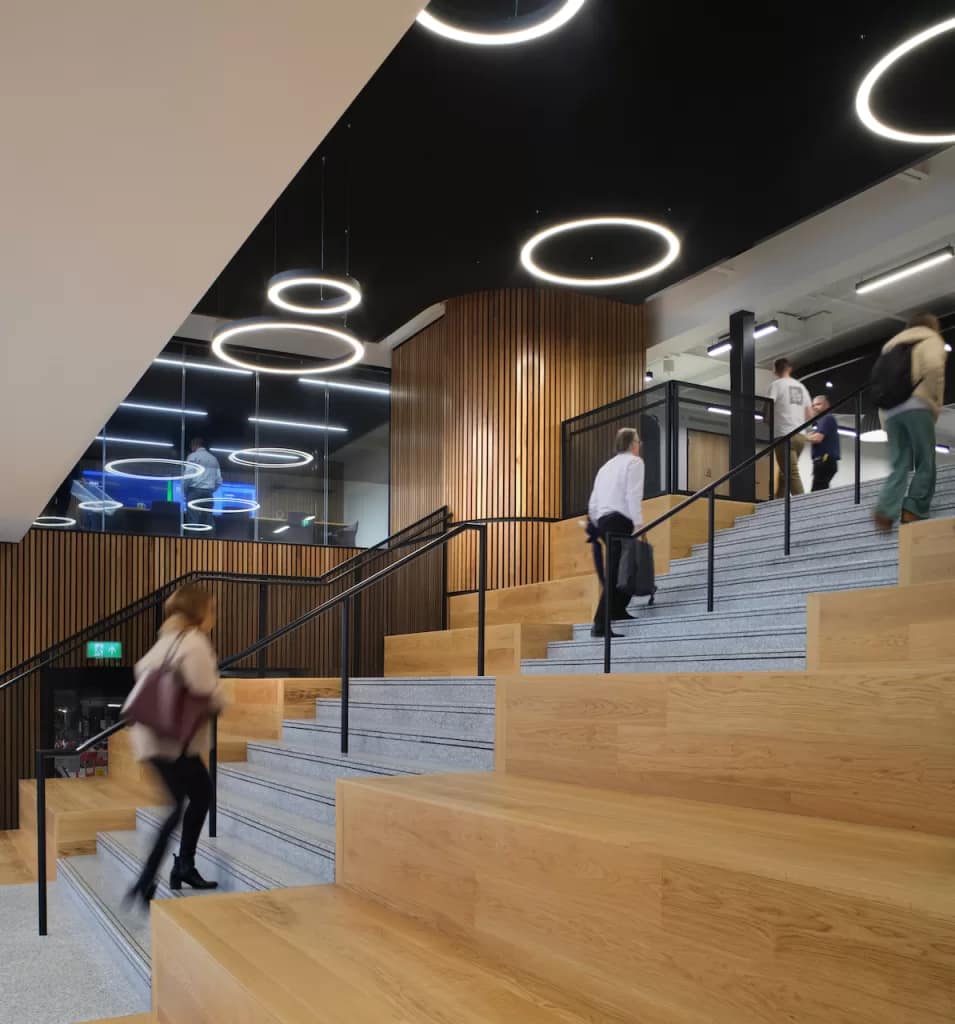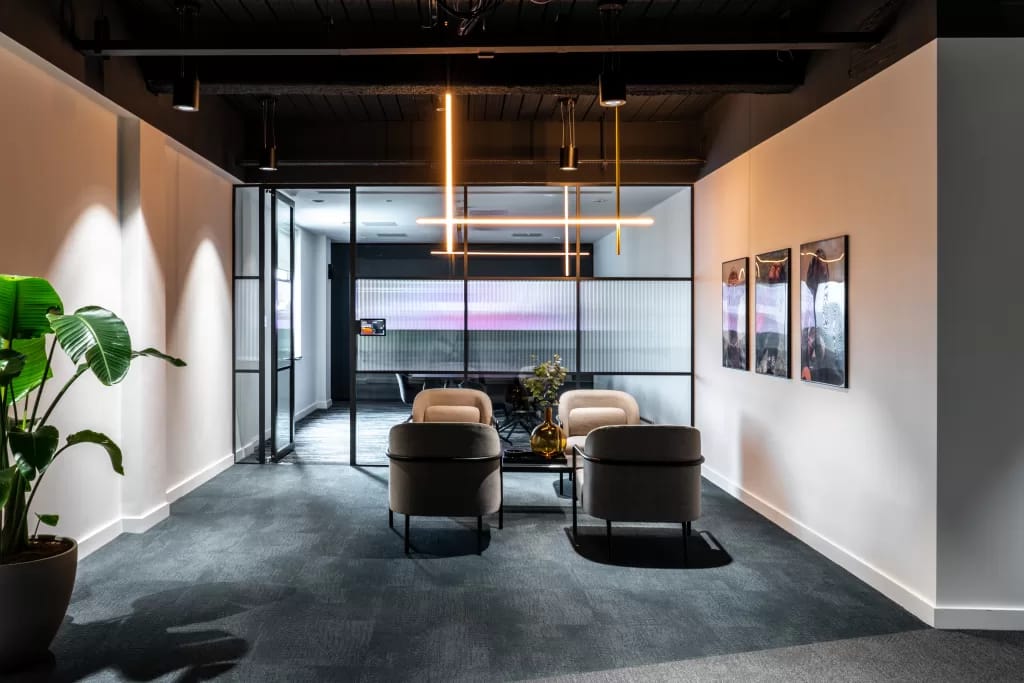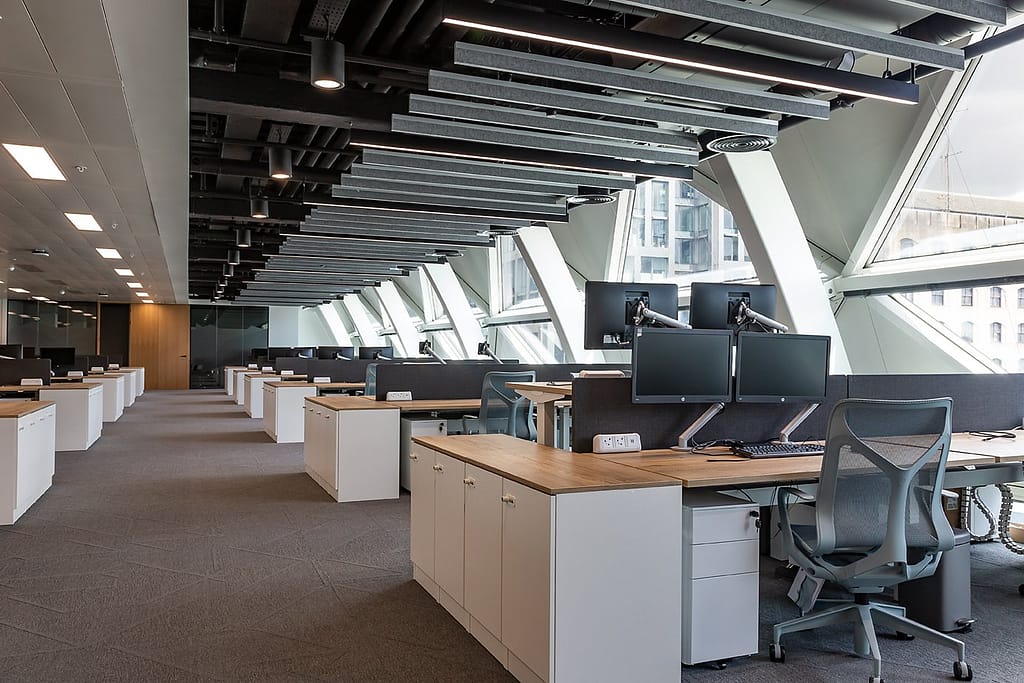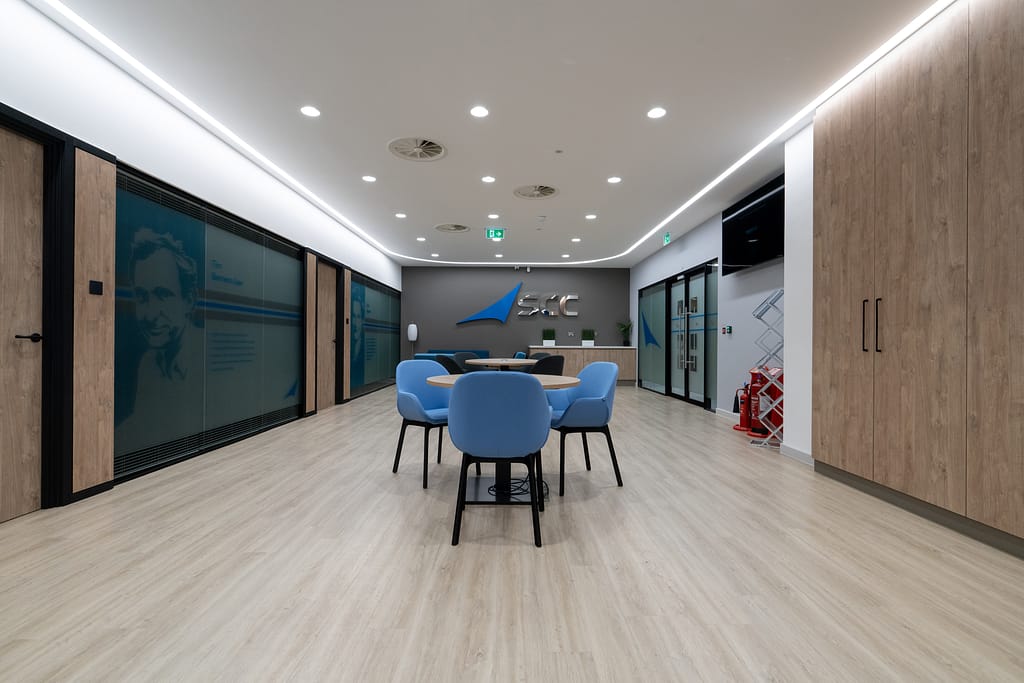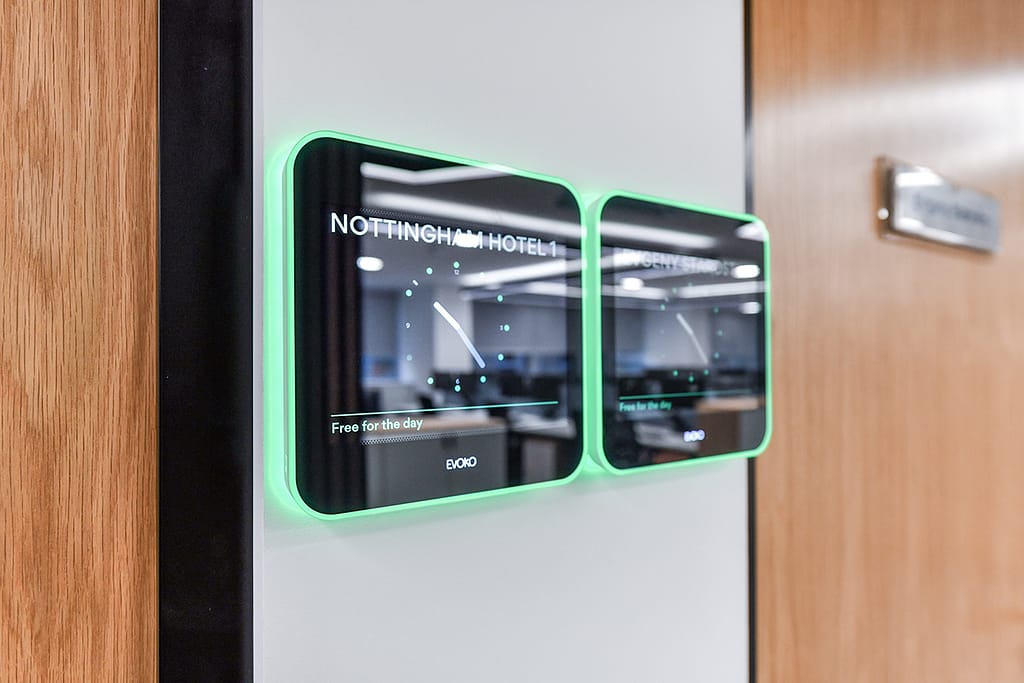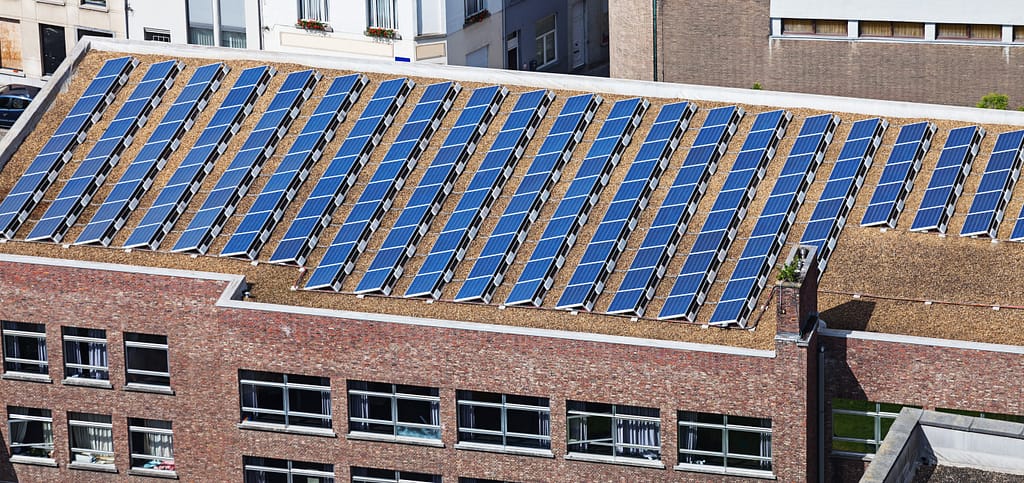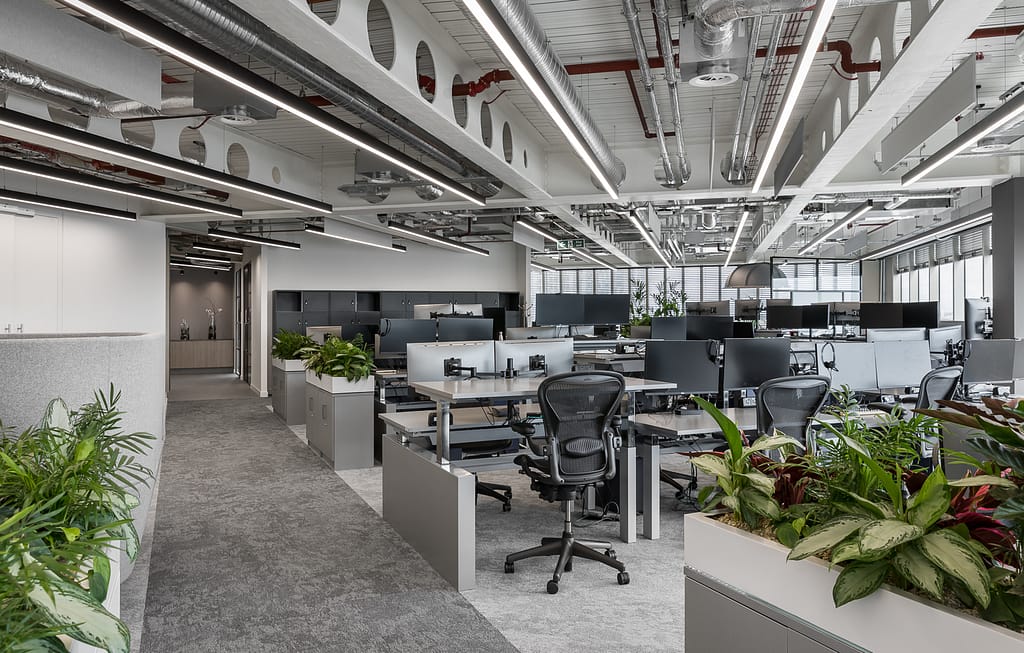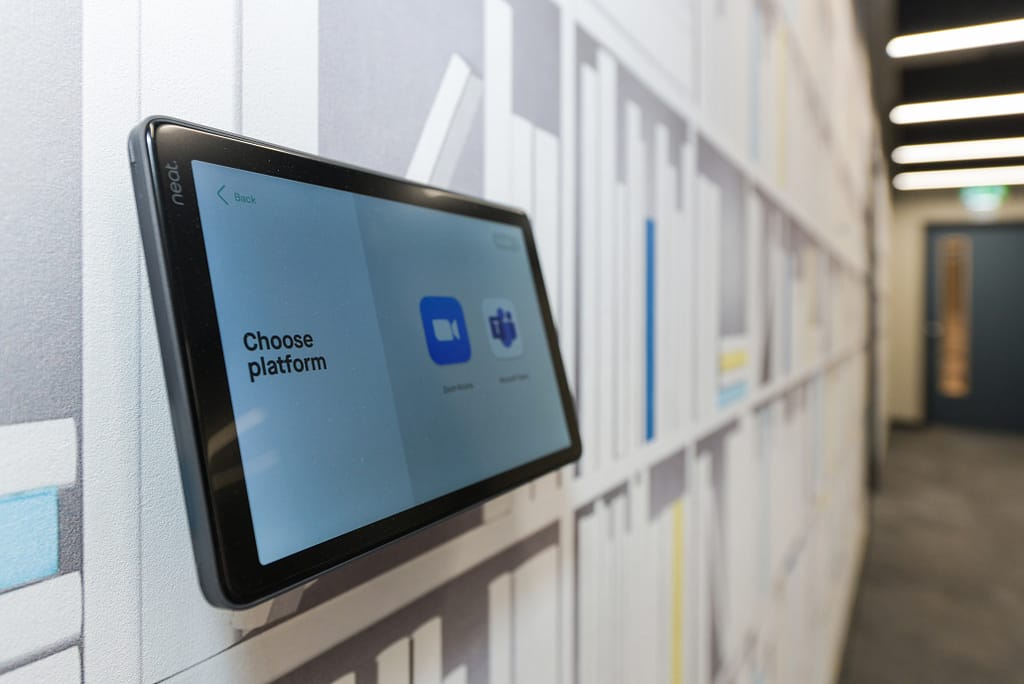As we approach 2025, office design trends in the UK are shifting towards bold, sustainable, and flexible solutions that meet the evolving needs of modern workspaces. Here are the emerging key trends that will shape office interiors in 2025.
LED Rope Lights: Customisable and Dynamic Office Lighting
LED rope lights are emerging as a key feature in office design trends in 2025, offering flexibility and creativity in commercial lighting. These versatile lights can be customised to fit a variety of configurations, adding a unique and visually striking element to office spaces. Whether used for soft ambient lighting in break-out areas or for more dynamic designs in corridors and reception areas, LED rope lights are energy-efficient and a fantastic way to bring warmth and vibrancy to modern offices.

Black Suspended Ceilings with Mesh Lay-In Tiles
One of the top office design trends for 2025 is the return of suspended ceilings, but with a bold twist. Instead of the traditional silver frames with off-white, textured 600×600 tiles, these suspended ceilings are painted black and use black mesh lay-in tiles. This choice adds a sleek, contemporary feel to office spaces while delivering practical benefits, like maintaining an open, exposed ceiling look and enhancing sound absorption. Black mesh ceilings create a sense of intimacy and sophistication, particularly in open-plan offices and collaborative areas, while providing a clean, modern aesthetic that pairs seamlessly with innovative lighting and acoustic solutions.

Dark Colour Schemes for a Cosy, Inviting Office Atmosphere
Dark colours, including deep blues, rich greens, and charcoal, will be a defining trend in office design in 2025. These tones create a calm and cosy environment that promotes focus and relaxation. Dark-coloured ceilings, walls, and furnishings can add depth to office spaces, while textures like wood and soft upholstery help balance the look. This trend is often paired with low-glare, UGR-compliant lighting, ensuring both a welcoming atmosphere and optimal visual comfort in the workplace.
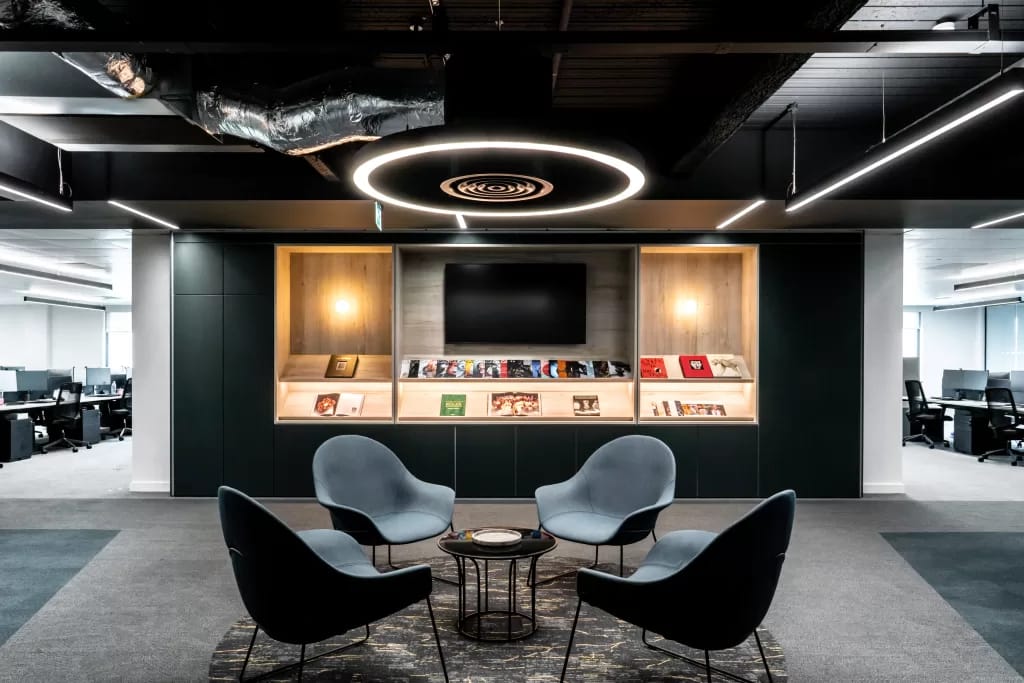
Circular Design & Remanufacturing: Sustainability at the Forefront
Sustainability is a growing focus in office design trends 2025, with circular design principles and remanufacturing gaining momentum. Rather than replacing old office furniture and fixtures, businesses are opting to refurbish and reuse existing items, reducing waste and lowering environmental impact. Circular design practices, such as using reclaimed materials and remanufactured lighting systems, allow companies to create stylish, eco-friendly workspaces without compromising on quality. This trend aligns with the growing demand for green-certified office spaces and sustainable design solutions.
Acoustic Solutions: Enhancing Office Comfort and Privacy
As open-plan offices become more common, effective acoustic solutions are crucial in office design trends 2025. Acoustic panels, felt baffles and timber slat walls help to absorb sound and reduce noise levels, promoting privacy and focus in the workplace. Companies are incorporating both form and function with design-driven acoustic elements, such as the Soundcushion range by Ekko Acoustics, which offers a variety of shapes and sizes for tailored sound control. By addressing both aesthetics and acoustics, offices can create an environment that enhances employee well-being and productivity.
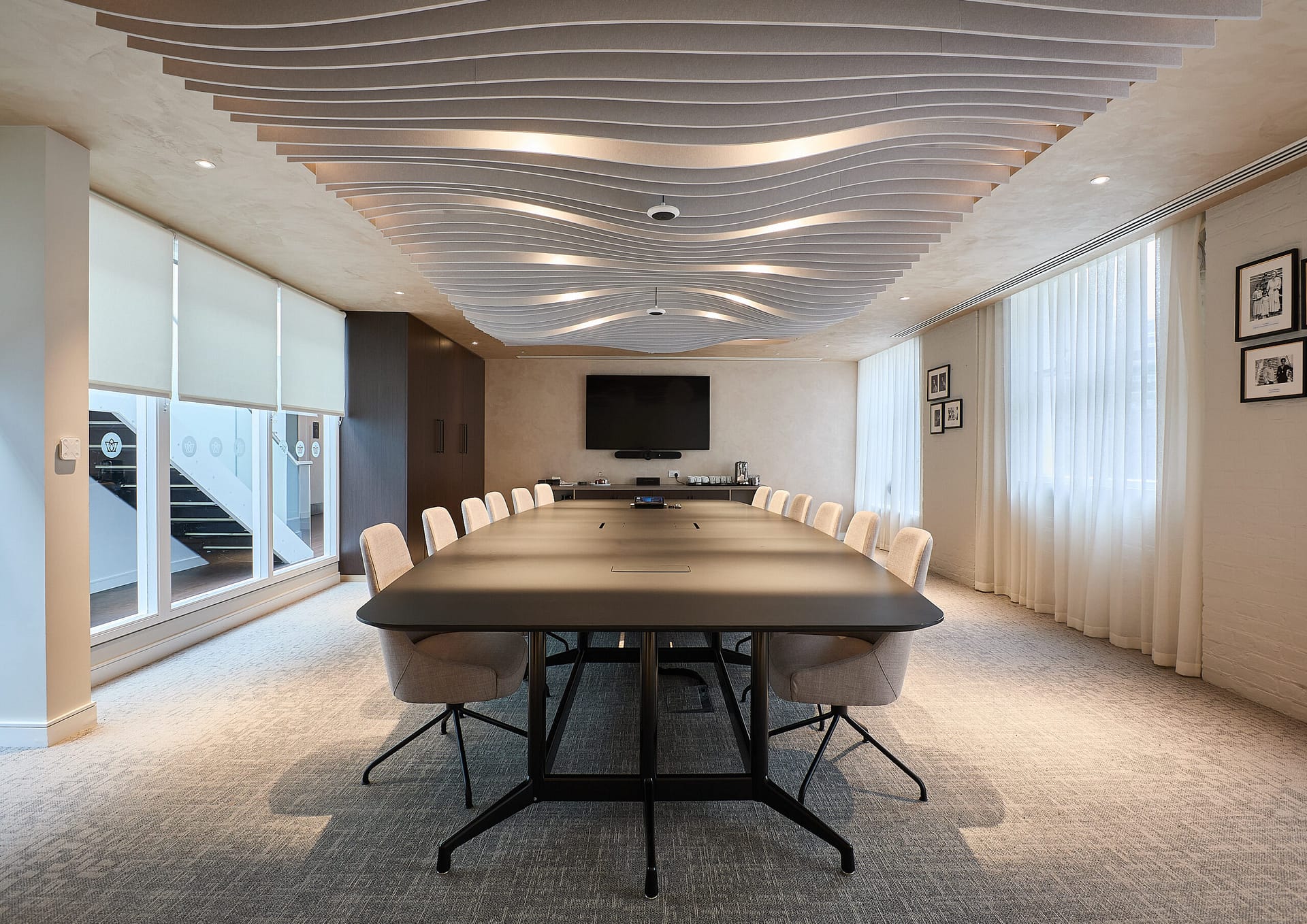
Industrial Aesthetic with Softer Finishes
The industrial style continues to be a popular choice in office design trends 2025, but it’s evolving. Exposed ductwork, concrete floors, and metal fixtures are now being softened with biophilic elements, such as greenery and natural wood finishes. This “softened industrial” look helps create inviting, grounded office spaces that foster creativity and connection to nature. By adding tactile textures and warm finishes, industrial design is becoming more comfortable and user-friendly while maintaining its distinctive urban edge.
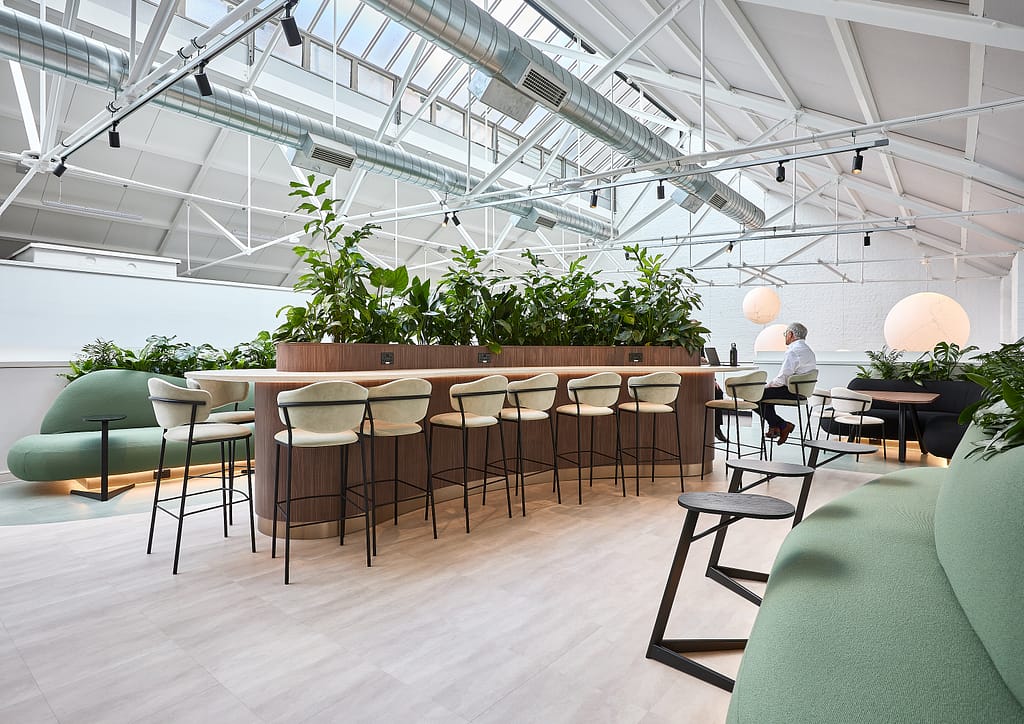
Flexible, Multi-Functional Office Spaces
Adaptability is one of the top office design trends 2025, with workspaces becoming more flexible and multi-functional. Modular furniture, movable partitions, and acoustic pods allow office spaces to easily transition between different functions, from collaborative areas to quiet zones. With an increased focus on agile working environments, offices are embracing layouts that can be reconfigured quickly to meet the diverse needs of modern employees. Acoustic solutions also play a key role in these adaptable spaces, ensuring optimal sound quality regardless of the layout.

Tech-Integrated Office Designs
Technology continues to be an integral part of office design trends 2025, with more offices adopting smart, tech-integrated features. Wireless charging stations, adjustable desks, and integrated lighting systems that respond to motion or time of day are becoming standard in modern workspaces. These innovations help reduce clutter and improve productivity, making the office environment more efficient and comfortable for employees.
Sustainable Materials and Eco-Friendly Practices
Sustainability remains a driving force behind office design trends 2025. Designers are increasingly turning to sustainable materials, such as recycled metals, reclaimed timber, and low-VOC finishes, to create eco-friendly workspaces. The use of locally sourced materials and energy-efficient fixtures helps reduce the environmental impact of office construction and design. This trend also ties into the growing demand for offices to be green-certified and demonstrate a commitment to environmental responsibility.

Textured Mirrors and Glass
Another emerging trend making waves in late 2024 and set to continue into office design trends for 2025 is the use of textured materials that nod to vintage aesthetics. Homapal natural lava polished aluminium mirrors, with their bumpy, uneven surfaces reminiscent of old-style obscured glass, are being embraced as a striking feature in modern office spaces. These mirrors create dynamic reflections and depth, making them a popular choice for statement ceilings and walls.

Additionally, old-style Flemish textured obscuring glass has seen a resurgence, now given a modern twist with an iridescent shine finish. This glass is being incorporated into screens and partitions, adding privacy while maintaining an open, light-filled feel. Both materials blend seamlessly with contemporary and industrial aesthetics, offering innovative ways to elevate and personalise office interiors.
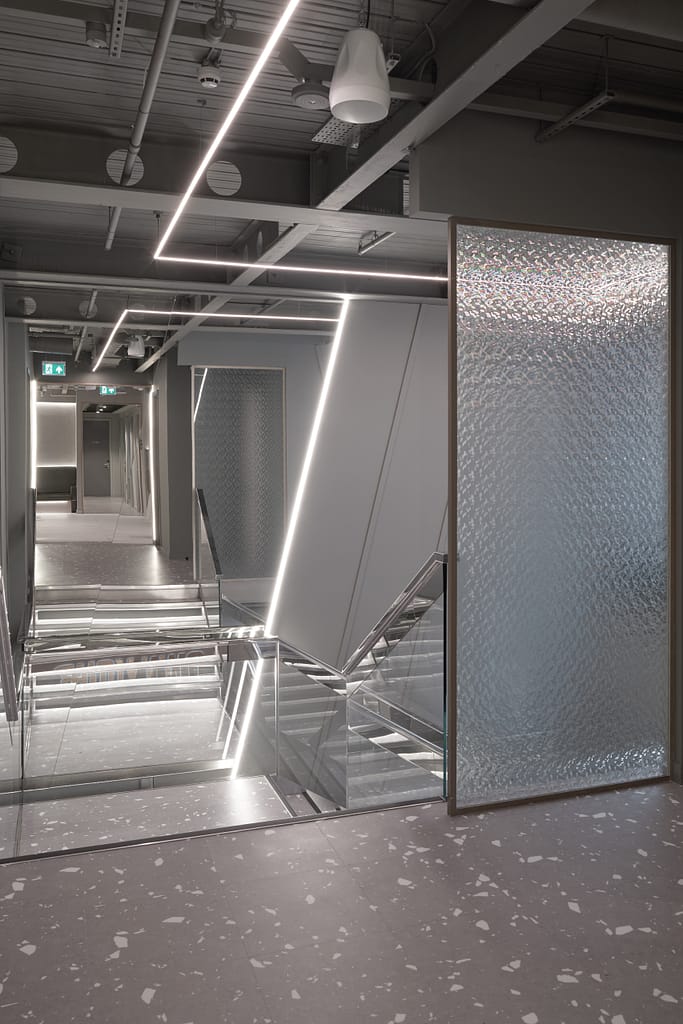
In 2025, office design trends in the UK will be focused on creating flexible, sustainable, and visually appealing spaces that support both employee well-being and productivity. By incorporating bold design choices, eco-friendly practices, and innovative acoustic solutions, businesses can create offices that are not only functional but also align with the values of the modern workforce
